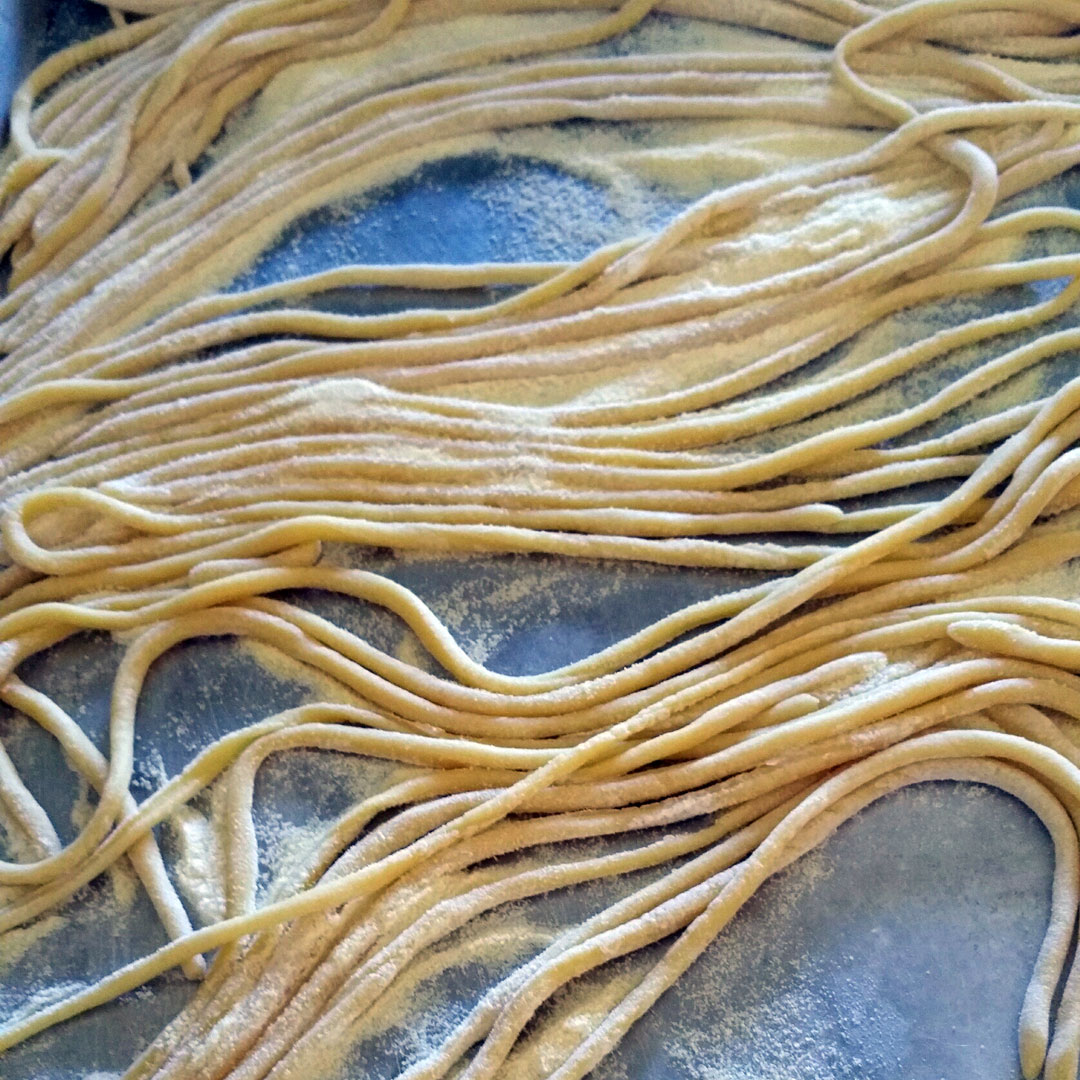
Pici Pasta
On April 26, 2015 by sixtyacrebakerPici pasta is a favorite of mine. When I see it on a menu, I order it. Pici is in a class of its own. It is fresh and chewy, and incredibly slurpable. Truth be told, I use this dough for my cavatelli as well, because of the chew factor.
When I was a kid, my grandparents would arrive on the day summer vacation began and stay until labor day. Some kids would come back from summer vacation, tanned, thin and 3 inches taller than they were when they left? Not this kid. My belly would be slightly rounder, I’d rattle off Italian phrases like I was Sophia Loren. I knew who Sophia Loren was. I was tan. We’d spend long evenings on the sun porch, eating, laughing, listening to the radio, and playing cards. My grandfather was an ace gin player and at a penny a point, we barely noticed our piggy bank dwindling. The food we ate was always delicious, and always from scratch.
Upon the gran’s arrival, the suitcases were hauled into the kitchen and unloaded. It was like Christmas. Literally. Grandma Grace would bring the Christmas stockings she collected from her bank and held from December until June. They were filled with hard candy and cheap toys; we loved them…and her for carrying on this tradition far longer than we really deserved. The grandmas were a tag team. Although they only saw each other this one time a year, they collaborated all year on what to bring with them to California. Out of the cases would come whole salami and prosciutto, buckets of polly-o and parmesan, capers, olives, anchovies. They were like traveling deli salesmen.
We didn’t think it odd at all.
Around day two or three the pasta making began in earnest. The dining room table, the pool table, the kitchen table, were all covered in sheets and dusted with flour. The pasta roller was brought down from the high shelf in the service porch and everyone was enlisted in the task of making pasta. We had one shot at making enough pasta for the summer. Mapping out how many dinners, who would be visiting, how much would each person eat, and what type and shape of pasta was a bit of an ordeal. The kitchen a bustle, until pasta making began. The room became silent. Everyone with a task; everyone working toward a common goal.
My job was always to transfer the pasta from the kitchen to its assigned table. Sometimes, most times, more went into my mouth than on the table. yes raw. Especially if it was cavatelli. I just loved the chew.
Still do.
Which is why I love this recipe. It has that bit of a chew. It also has a raw egg, so eating it uncooked is a risk you have to decide about on your own.
Semolina Pasta Recipe
*use for pici, cavatelli, orecchiette
2 cups 00 flour
1 cup semolina flour
3/4 tsp kosher salt
1 extra large or jumbo egg (i use a duck egg)
1 Tbs olive oil
1/2 cup (+/-) cool water
Place 00 flour, semolina flour and salt in a large bowl. Mix to combine. Make a large well in the center of the flour and fill with egg, olive oil, and 1/2 cup water. Using a fork mix together until all flour is moistened and the mixture is coming together. Use your hands to get the dough together in a ball. Turn out onto a floured work surface and knead for approximately 10 minutes. The dough should not be wet, and it shouldn’t be scraggy, but it should be a bit stiff. If the dough is too wet, use a bit of flour when you knead…just a bit at a time.
Wrap in plastic wrap and place in the refrigerator for about 1 hour.
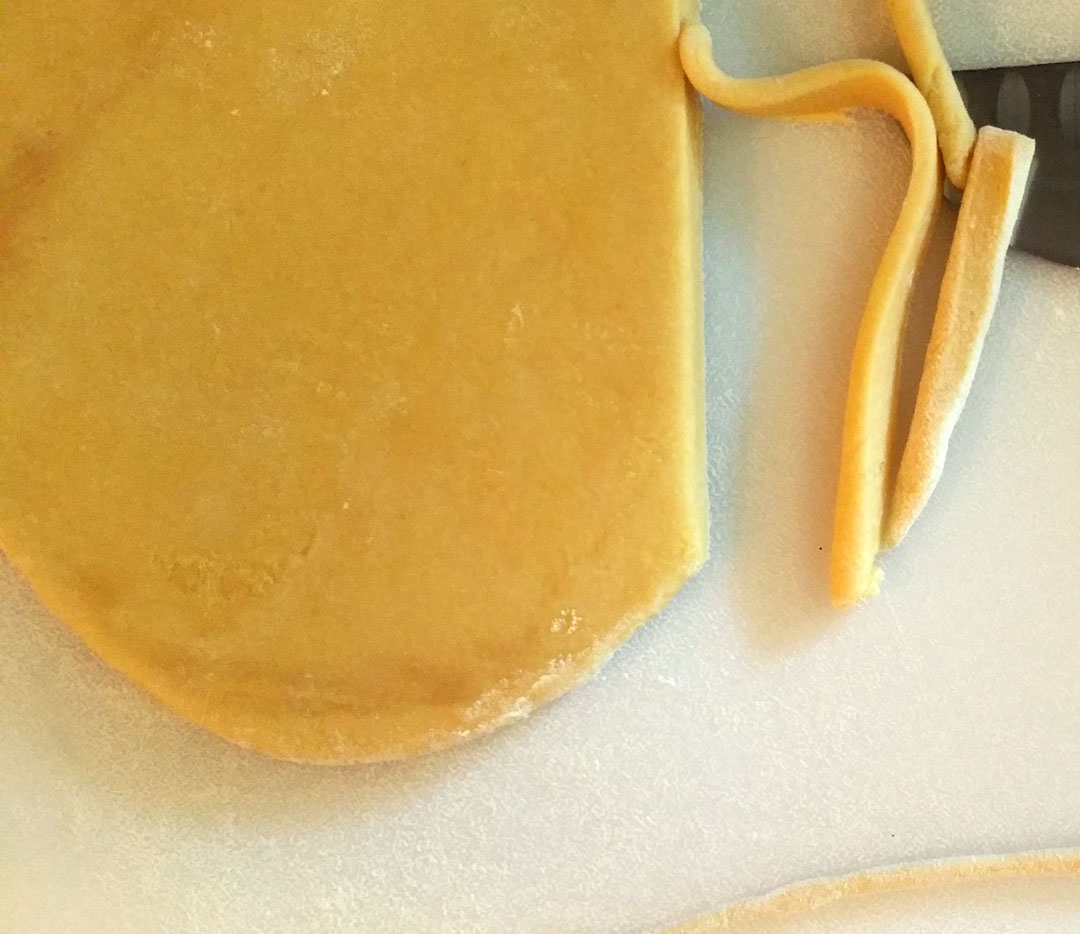
To roll out the pici:
Roll the dough with a rolling pin, on a lightly floured surface to about 1/4″ thick. Using a knife, cut the dough into strips about 1/8″ wide. Gently roll each piece on a lightly floured surface, starting from the center, and work your way out. Place on a tray dusted with semolina flour.
Cook in a large pot of salted boiling water for about 8-10 minutes. Serve with your favorite ragu.
** pici pasta is not spaghetti. it is thicker and a bit denser. As I said before, it has a bit of a chew to it.
Here is a short video demonstrating how to roll out your pici
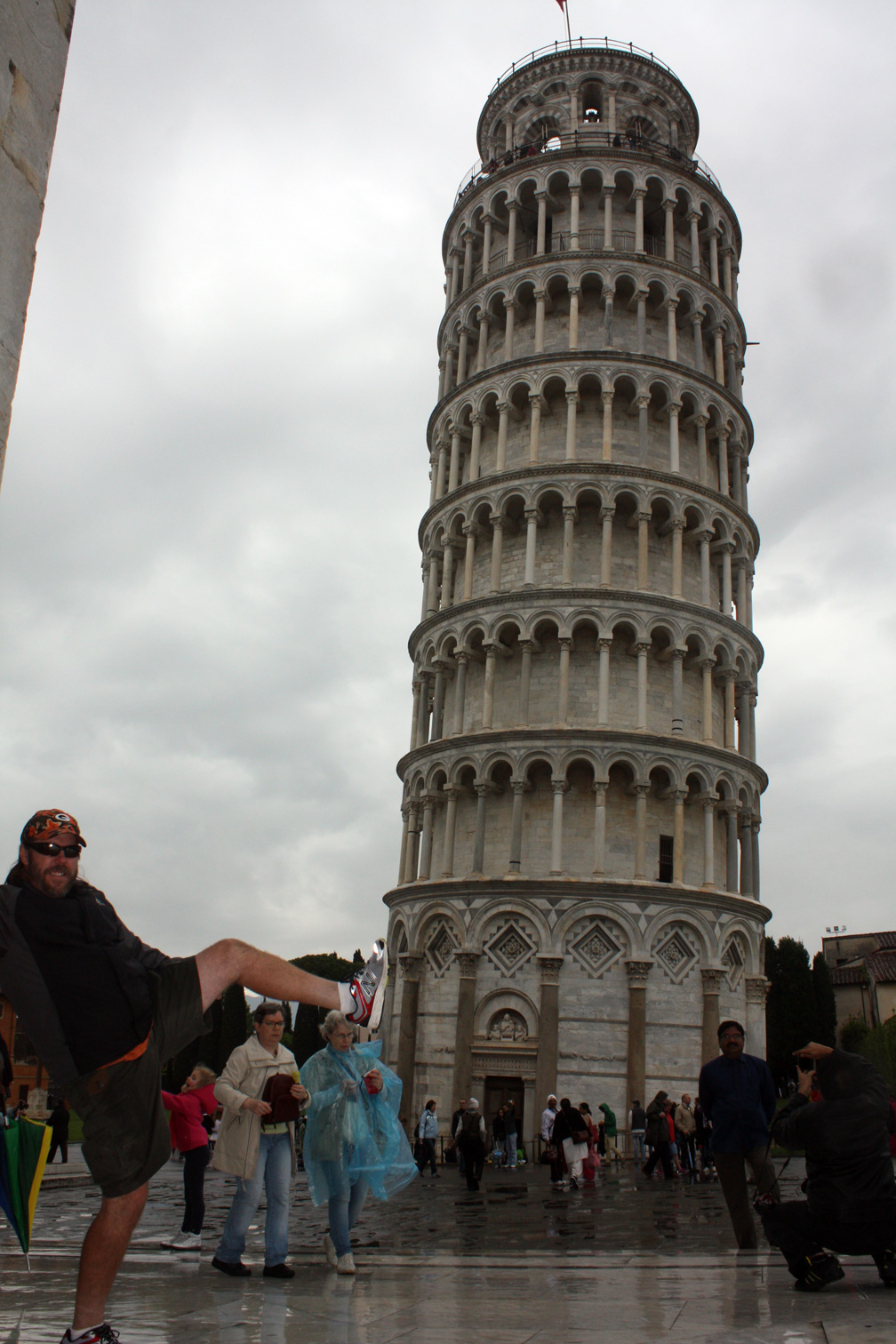
Pisa-Lucca in April–day two
On April 29, 2013 by sixtyacrebakerSaturday in florence is like Saturday in any city. Locals pouring into town to do their weekend shopping and tourists milling about in large groups, staring upwards. Just an all around crowded situation. Which is why we got out of town. Pisa and Lucca the destination. Turns out, it wasn’t such a bad idea. The weather had turned runny just as we took our seats on the excursion bus. Rain began pouring down. I never think i am a fan of the organized tourist train/bus/walk, but i nearly always give them a try. I am hardly disappointed; except when it includes food. Which is a big bad bust, most of the time. Those i avoid, because as you know, I am all about the food. Speaking of which. We had steak and eggs for breakfast.There are no photos, because i forgot. By the time i remembered it didn’t look so appetizing. Just trust me; leftover bistecca fiorentina with a couple of fried eggs and hunk of bread, is money.
In Pisa we did a tour of the church, which is beautiful but dark. Too dark to take photos. Because in churches, you can’t wear a hat and you can’t use a flash. The real draw in Pisa is the tower. A leaning tower.I love all the great photos that people fashion; holding the tower up, grimacing under the supposed weight. They never cease to humor me.However, I rarely see this maneuver.
Someone kicking the darn thing over.It is funny, right? That is my husband. He enjoys a good laugh as much as I. We hooted over this one for hours.
Time for lunch. In a tourist town, where restaurants actually name themselves restaurant tourista, getting a good meal is a bit dubious. We found one just outside the main tourist area called Trattoria Bruno.
Mike’s penne pasta with rabbit and boar was outstanding.
My handmade pasta with porcini mushrooms was also delicious. The pasta so thin, you could almost see through it.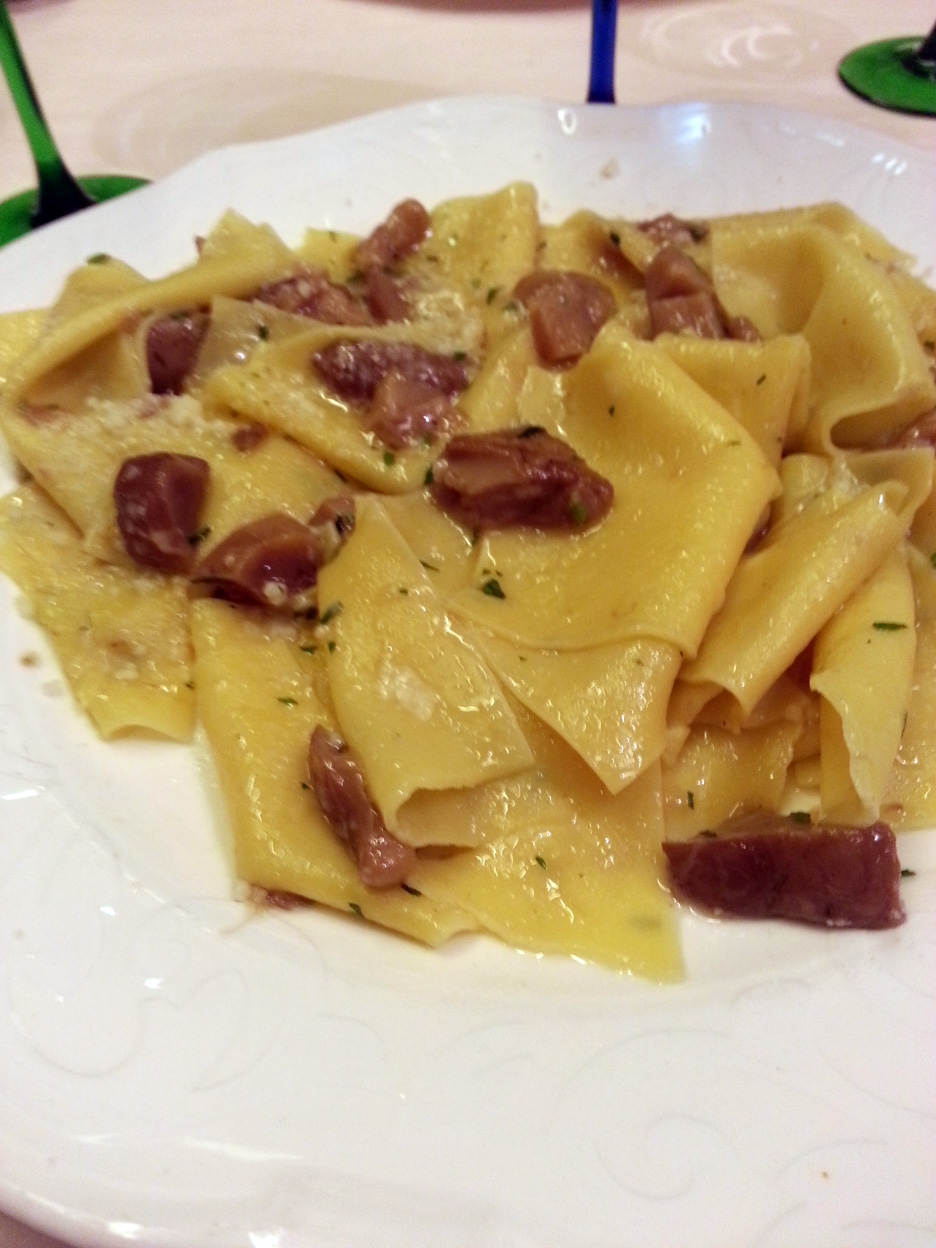
From Pisa we got back on the bus and headed to Lucca; a medieval city that is usually quite lovely.However, on a rainy Saturday with many of the venues closed for the afternoon,
there was little to see. After getting a bit drenched in the rain we stopped for a hot chocolate. In this part of Italy, hot chocolate is more like warm chocolate pudding, than chocolate water. You decide if it sounds better or not.
e poi
which means and then not the poi you eat in Hawaii, which is not Italian by any means. Despite having the same name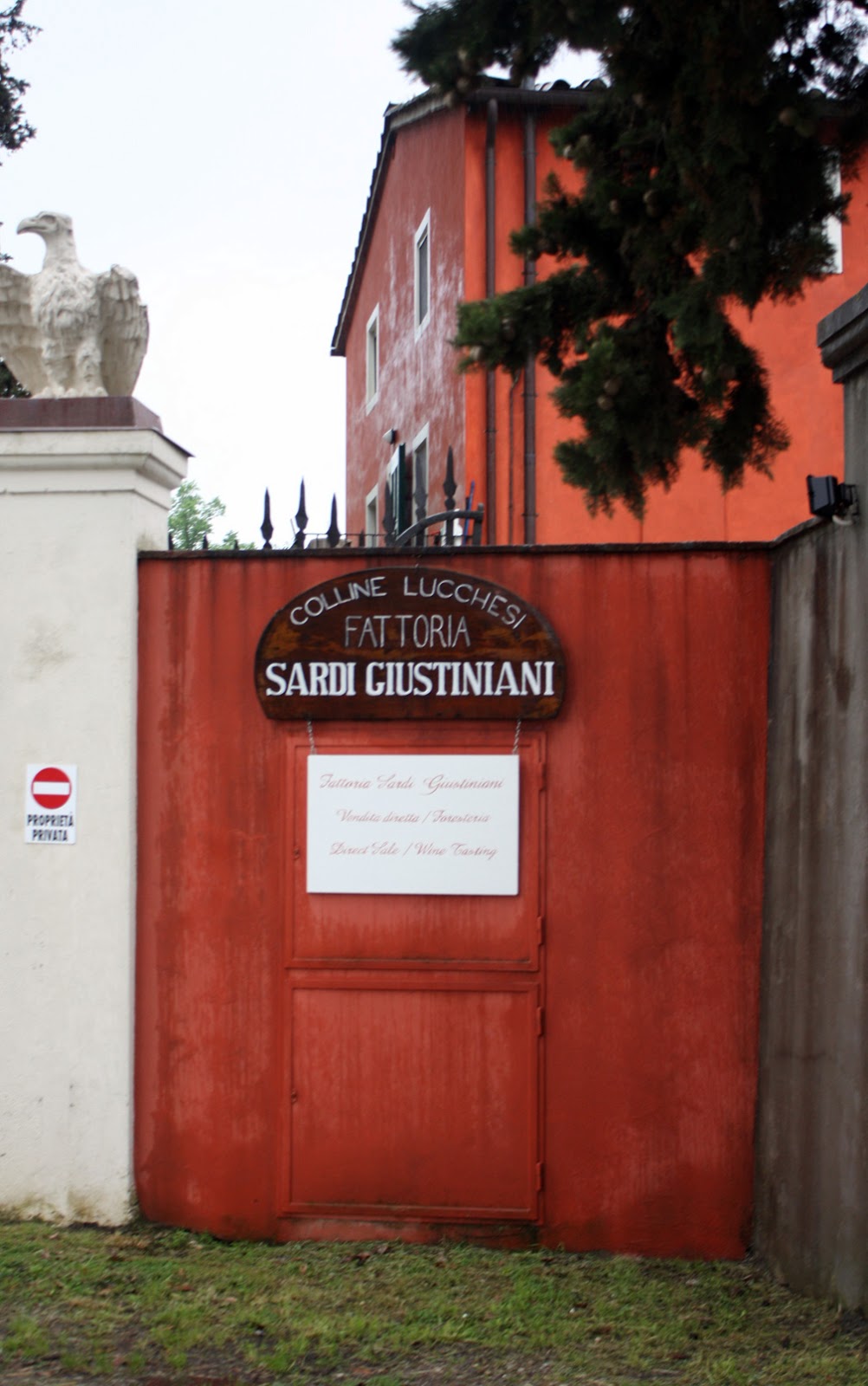
We visited a winery just outside of Lucca, where it turns out, they make the house wine for one of my favorite places in New York City. Sant. Ambroeus. When i was getting married
my dress came from vera wang. Before my first appointment and subsequently all my fittings, I would have coffee and a little something at sant ambroeus. So when the proprietor of this winery in Lucca off-handedly mentioned the restaurant I perked up with “on madison avenue!?!” Sje and i had a bonding moment. It is her brother’s place and all the “house wine” comes from here.
It is pretty good. A tasty drinkable wine. I was set to buy quite a bit, but then my new friend the owner gave me the name of their american distributor, so i wouldn’t have to pay for shipping. Which now means, i’ll probably buy a whole case.
After the wine and the food and the travel by bus, we were pretty wiped out and without plans for dinner. We grabbed a quick porchetta sandwich and called it a night. Actually,a night and half a day,since jet lag reared its ugly head. We slept about 12 hours. Waking up just in time to search out lunch….
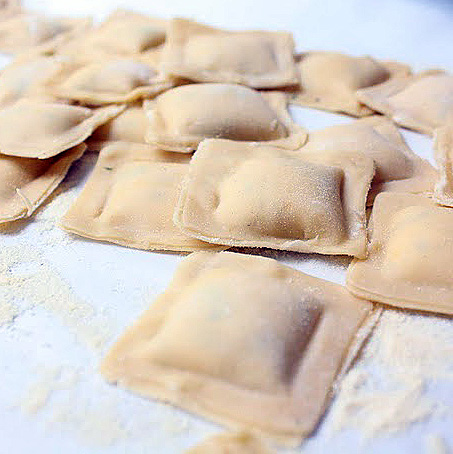
Lemon-Chevre Ravioli
On July 18, 2011 by sixtyacrebakerI have been making homemade pasta for as long as I can remember. Growing up, as summer arrived, so would my grandparents. Both sets. Heavily ladened with luggage and lessons, my grandparents were old school Italians. The “grandpops” sat on the sun porch playing cards and tending to the vegetable garden planted each year. The “grans” would sit at the kitchen table compiling lists of what would be needed for the evening supper. Pasta was always a side dish always homemade. We would make it several times each summer; filling our bellies and the freezer. The dining room became pasta central. The dining room table only used at Christmas, in a room that appeared hermetically sealed, would become a work bench covered in flour. We’d spend hours kneading, rolling, cutting, and drying our summer staple. It must be said, we never used 00 flour. It was hard to find and expensive–we used what we had on hand. It was delicious.
My grandparents have all passed and with them many of the summer traditions we all enjoyed. I still make pasta, in small quantities, with the same equipment as generations past. However, it is abundantly less shocking to see my dining room, littered with flour and covered in pasta. Sometimes I use 00 flour, if I have it on hand. But mostly, I use a high quality cake flour, which works beautifully for a delicate pasta, like this lemon pasta I used to make chevre ravioli. It is not quite how nonna would do it, but delicious none the less.
Lemon-Chevre Ravioli
for the pasta
3 cups cake flour (i use king arthur)
5 extra large eggs
2 tsp finely grated lemon peel
Place the flour in a mound on your work bench. Using your fist, make a large well in the center of the mound. Using the fork, bring the flour into the eggs to begin forming a dough. Continue bringing the flour in until you have a sticky mixture. Begin working the rest of the flour in by hand and knead for at least 10 minutes, and until you have a very smooth dough. The dough must be very smooth and well kneaded before leaving it to rest for 10 minutes or up to an hour at room temperature. Cover the dough with plastic or a towel or something to discourage a “skin” from forming. When ready, use a bit of flour so the dough does not stick and roll very thin. Cut in desired shape(s)
for the filling
5 oz chevre–room temperature
3 oz cream cheese–room temperature
1/2 tsp garlic powder
pinch nutmeg
1 tsp finely grated lemon peel
2 Tbs basil leaves–chiffonade
pinch salt
1/4 tsp white pepper
1 egg
1/4 cup grated parmesan cheese
Mix everything together until evenly incorporated. Place in refrigerator until using. Can be made up to a day in advance and kept covered in the refrigerator.
to assemble
small bowl of water and pastry brush
flour
semolina flour or cornmeal
It is important that your dough is rolled out thin, because you are using two pieces. it doesn’t have to be as thin as a won ton wrapper, but it should be close to it. If you are using a pasta machine, roll the pasta to the second thinnest setting.Place 1 sheet of pasta, cut into strips 2″ wide and as long as you like on your work surface. make sure your surface is dusted with flour to prevent sticking. Place filling with a teaspoon in the center of the dough, leaving room for even border on all sides. brush the dough, where you are going to seal the top piece, with water. Place a second piece of dough on top. Press around the filling with your fingers until you have a nice seal. Stamp with your ravioli cutter, cut with a knife, roller or cookie cutter to make uniform ravioli. Press the seams one more time. Place on a cookie sheet sprinkled with a bit of semolina or cornmeal to prevent sticking. Use immediately, or freeze for future use.
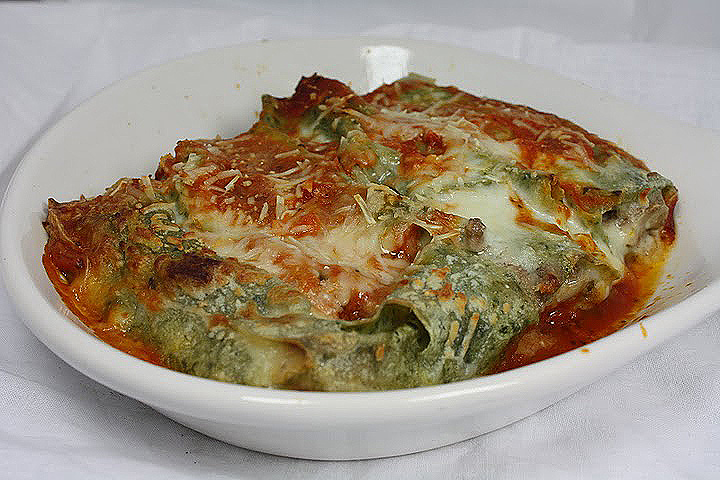
Cannelloni
On February 16, 2011 by sixtyacrebakerAfter dinner Mike leaned in real tight and whispered; “you make a great lasagna.” This is delicious, but lasagna it is not.
Cannelloni
adapted from mario batali
fresh pasta sheets–boiled and shocked in ice water
For Filling
olive oil
1/2 lb ground pork
1/2 lb lean ground beef
1/2 cup grated parmesan cheese
1 generous Tablespoon flour
1 cup milk
1 egg–lightly beaten
pinch freshly grated nutmeg
salt and pepper to taste
Glug enough olive oil to just cover the bottom of skillet. Add pork and beef and cook until no longer pink. Drain off excess fat. Stir in flour. Add milk and Parmesan cheese. Cook on low for about 10-15 minutes until thickened. Remove from heat. Let cool a bit, then add egg, nutmeg salt and pepper. Let cool completely while you boil pasta.
For Tomato Sauce
use your favorite recipe or even a bottle sauce…you need only a little for this recipe
For Besciamella
3 Tbs unsalted butter
3 Tbs flour
1 1/2 cups milk
1/4 cup parmesan cheese
1/4 tsp nutmeg
pinch salt
Melt the butter in a saucepan. Whisk in the flour and cook for just a minute or two. do not brown. Whisk in milk and bring to a simmer. As it begins to thicken, add the Parmesan, nutmeg and salt. The sauce is to be thickened, but not gooey. It is a sauce.
To assemble
Place a bit of tomato sauce in the bottom of an oven safe dish. Use a very generous tablespoon of meat for each cannelloni. Place meat in the center of the pasta sheet and spread evenly. Roll the pasta into a tube, leaving the ends open. Place in the prepared dish. Repeat with remaining meat and pasta. Once completed, cover in beciamella, swirl in a bit more tomato sauce. Sprinkle with Parmesan cheese. Bake at 350 until heated through and the beciamella begins to bubble.